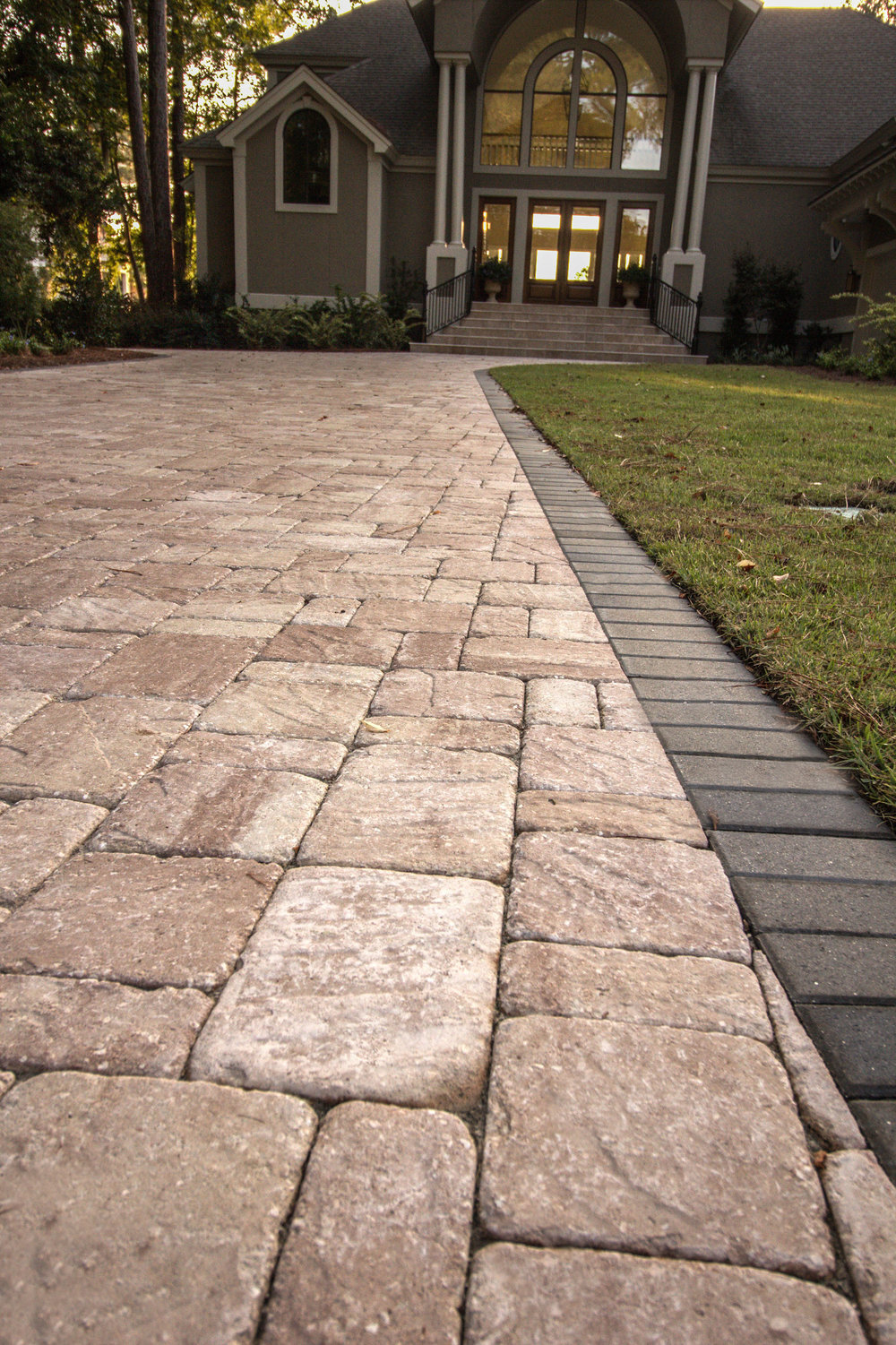How to Clean and Maintain Your Brick and Paving Stone Driveway, Walkway, and Patio
When it comes to yard maintenance, most people fall into one of two extremes: either they love it, or they hate it. While our team here at LandEx Co. absolutely loves caring for your property, we know not everyone shares the same sentiment. Regardless of how you feel about it, grounds upkeep is an essential part of retaining and even adding to your home’s value.
If not properly maintained, brick and paving stone driveways, patios, and walkways can transform from a beautifully polished feature to a seemingly ancient, overgrown artifact in just a few years.
Follow these two simple care guidelines to keep your brick and paving stone driveway, patio, and walkway looking fresh.
Keep the brick and paving stone surfaces clean. If you let this one go and your brick or paving stone is looking a little scary, don’t fret. A power washer with the use of a proper surface cleaner will clean the brick and paving stones right up. It is essential that a surface cleaner is used so that the water pressure is distributed evenly, protecting the pavers from damage. In the process of power washing, all of the sand, dirt, and debris will be removed from the crevices between the bricks and pavers as well. This will need to be replaced, which leads us to care guideline number two.
After the power-washed surface has dried completely, replace the sand that was lost during power washing. There are two sand types to choose from when selecting your replacement: regular, and polymeric. Regular sand is cheaper, but that is the only pro. Regular sand does not harden like polymeric sand and therefore does not stop or even lessen weed growth. Regular sand also, then, is not able to prevent those booming ant communities from taking over your lawn. Further, regular sand will be washed away by storm water quite quickly, and you will have to repurchase and reapply the sand annually. Lastly, sand is messy. You will have to be constantly sweeping your driveway, patio, or walkway, and, even then, much of the loose sand will inevitably get tracked into your home. All of these cons are avoided entirely with polymeric sand.
Stay tuned for next week’s blog on how to properly install polymeric sand. Like most worthwhile things in life, polymeric sand takes a bit more effort up front but pays off in the long run. At LandEx Co. we choose polymeric over regular sand every time as it provides better looking, entirely maintenance-free results for up to five years.
Subscribe to be notified about new blog posts! Our promise: No fluff and no spam.

